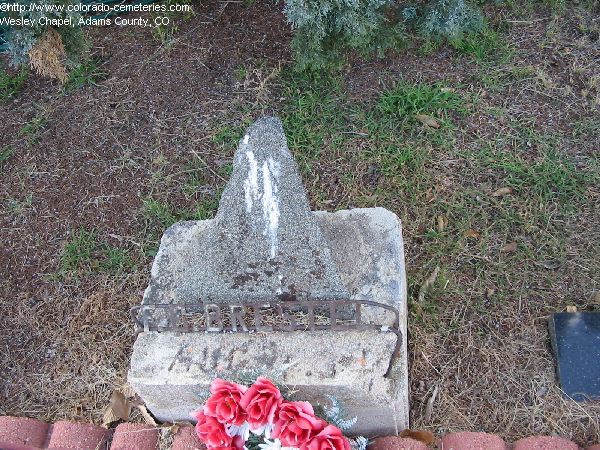

What's New?Spring has well and truly sprung. Everything's getting greener, and as the weather gets warmer, it's time to spend some quality time at the cemetery near you! Or, better yet, visit one you;ve never seen before. If you didn't submit your story for the book project honoring the former caretaker of Riverside Cemetery in Denver, Cliff Dougal, you still have time! If you would like to submit a story Cliff told you, or tell one of your memories of Cliff, please use this submission form. Featured ArticleHandmade HeadstonesSome of the most interesting monuments are not the grand sculptures marking the graves of the wealthy or the famous. In small, rural cemeteries, you will typically find markers made from local materials, by people who had more love than money, who showed their desire to honor and remember those who'd left them by creating a unique headstone.
In Colorado, some of the more common examples of these markers
Another commonly used material is basic sheet metal, welded together and then the lettering is done right onto the metal. This design is simple, yet it conveys the notion of a home effectively. This marker is in the Dumont Cemetery. Some markers have been natural stones set into flat markers, in the pattern of letters, making the stones a mosaic of the person's name and other details normally inscribed onto stones. One of the most unusual markers I've ever seen is in the Avondale Cemetery, which is also called the St. Vrain Cemetery. It was founded in the late 19th century. The cemetery is still active today, and is the burial grounds for the farming community just east of Pueblo. The cemetery has many examples of homemade markers, and individual tributes, and one of these in particular caught our attention, and merited further examination. The first thing we noticed was the color of the marker, and we became curious as to what material could be such a shade of blue. As we got closer, the mystery deepened, and we were even more confused.
And then we got right up to the site, and realized what we were looking at. Take a close look at the image and see if you can figure out how this monument was constructed. Give up? It's a bathtub. The tub is set into the ground lengthwise, and the bottom end is buried and set in concrete. On top of the concrete, is set the angel statue, and the name of "Rose Rael" is inscribed in the concrete base. This is easily one of the most unusual markers I've ever encountered, and certainly ensures that I will never forget it. I admit, it makes me chuckle to think about it, and I'm glad that cemeteries like this exist, where people can create creative markers. The "fancy" cemeteries in large towns would never allow such a marker on their grounds; they would find it tacky and undignified. Truly, this is their loss. Have any of you seen any unique handmade markers on your visits to cemeteries? I'd love to hear about them. Around the WebAn interesting follow-up to last month's article on pet cemeteries, this is about a pet cemetery with a memorial to war dogs. In WWI and WWII, 15,000 soldiers were saved by these brave dogs. A nice history of a civil war-era cemetery in Augusta, Georgia which is the final resting place of seven Confederate Generals. In the UK, a grant has been awarded to develop smart phone applications for cemeteries. Cholera epidemics took their toll on communities. Mass graves for victims were the norm in cemeteries. This article talks mostly about cholera itself, so, it's a bit of a stretch for "cemetery news." Find us in Facebook!More pictures! More discussion! More cemeteries! Introducing a new way to keep up with all the Colorado-Cemeteries.com news, and even talk about the site with other "fans." Missed an Issue?Don't fret! All the issues of Grave News can be found online at: http://www.colorado-cemeteries.com/Grave_News-backissues.html |

 F Brestel. The remaining letters of the name are in metal, while the dates are written in the concrete itself.
F Brestel. The remaining letters of the name are in metal, while the dates are written in the concrete itself. 

